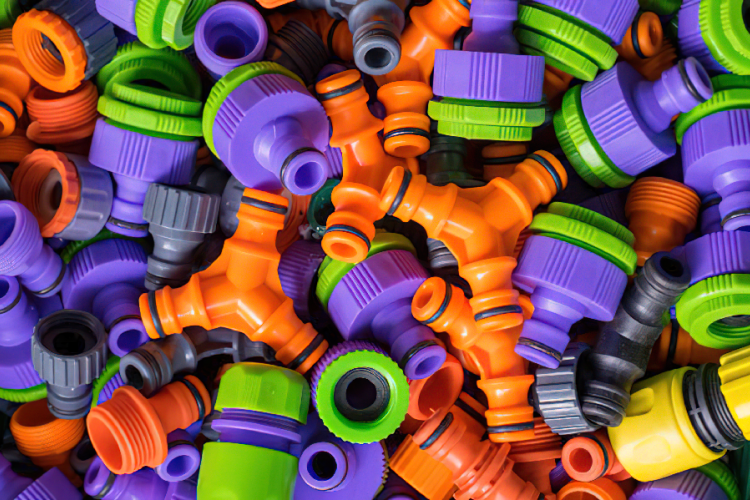Polyamide (PA)

Polyamide (PA)
The name nylon refers to the group of plastics known as polyamides. Nylons are identified by their amide groups (CONH) and cover a range of material types (eg Nylon 6.6; Nylon 6.12; Nylon 4.6; Nylon 6; Nylon 12 etc.) providing an extremely wide range of usable properties. Nylon is used in the manufacture of films and fibers, but it also has uses as a molding compound.
Nylon is created by two methods. Even numbers arise from the first, a condensation reaction between diamines and dibasic acids produces a nylon salt. The first number of the nylon type indicates the number of carbon atoms in the diamine, the second number indicates the amount in the acid (eg nylon 6.12 or nylon 6.6).
The second process involves opening a monomer containing both amine and acid groups known as a lactam ring. The nylon identity depends on the number of atoms in the lactam monomer (eg nylon 6 or nylon 12 etc.).
FEATURES
Most nylons tend to be semi-crystalline and are generally very tough materials with good thermal and chemical resistance. The different types offer a wide variety of properties, with specific gravity, melting point, and moisture content that tend to decrease as the nylon number increases.
High strength and stiffness at high temperature
Good impact resistance even at low temperature
Very good flow for easy processing
Good wear and abrasion resistance
Excellent fuel and oil resistance
Good fatigue resistance PA 6 has excellent surface appearance and better machinability than PA66 (due to its very low viscosity)
Good electrical insulating properties
High water absorption and water balance content limits use
low dimensional stability
Attacks strong mineral acids and absorbs polar solvents
Proper drying is required before processing
SCOPE OF APPLICATION
Nylon fibers are used in textiles, fishing line and carpets. Nylon films are used for food packaging offering toughness and low gas permeability combined with temperature resistance for boiled-in-pocket food packaging.
Molding and extrusion compounds find many applications as replacements for metal parts, for example in car engine components. Intake manifolds in nylon are tough, corrosion resistant, lighter and less expensive than aluminum (when tooling costs are met) and offer better airflow thanks to a smooth inner hole rather than rough casting. Its self-lubricating properties make it useful for gears and bearings. Its electrical insulation, corrosion resistance, and toughness make nylon a good choice for highly loaded parts in electrical applications such as insulators, key housings, and ubiquitous cable ties. Another important application is for power tool enclosures.
